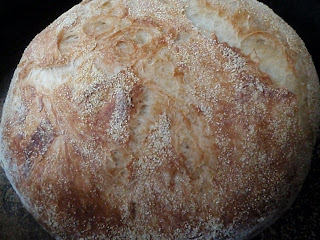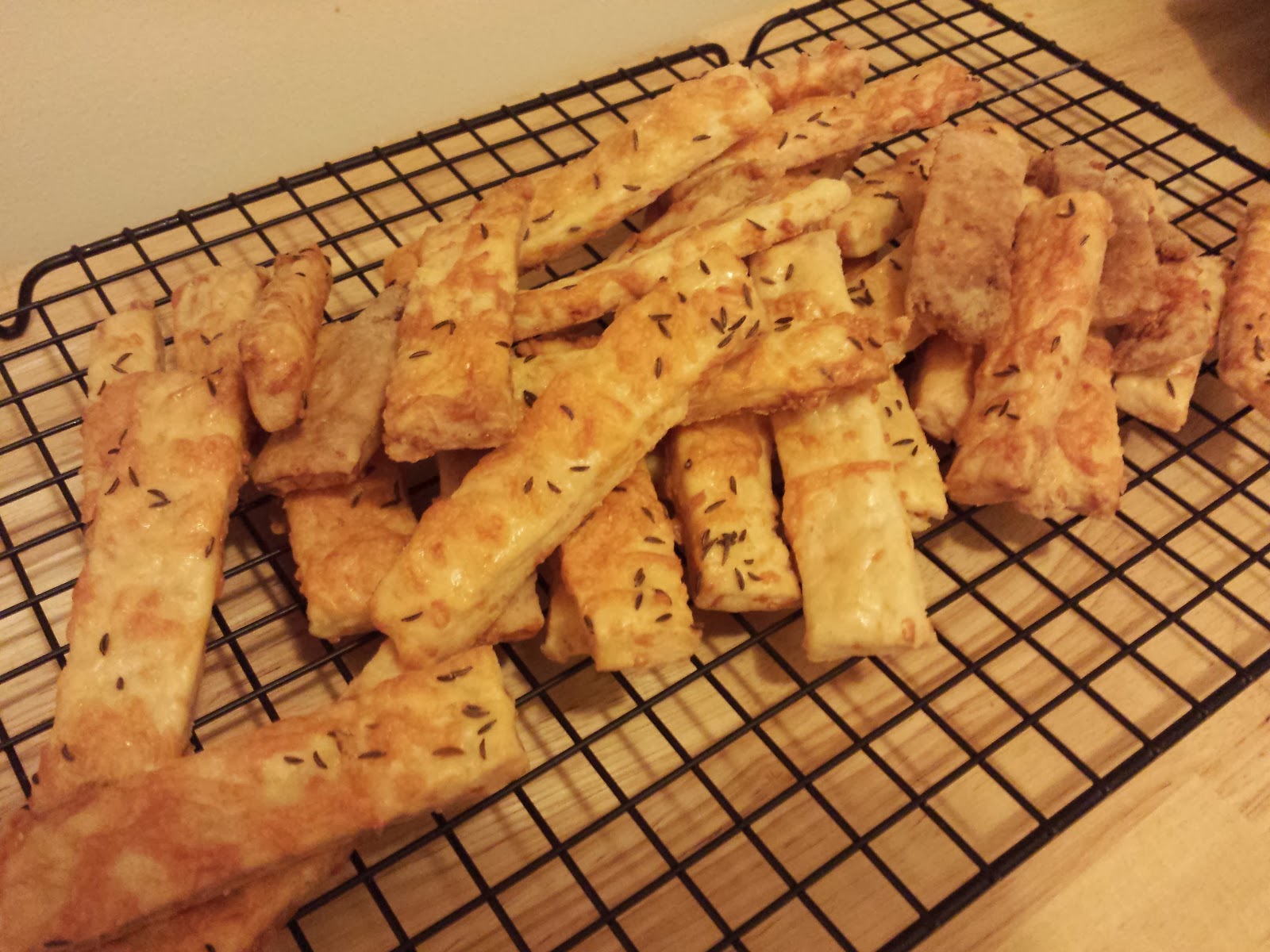No-Knead Bread--The Trend Makes It to the Sticks
 After church this morning, I walked up to my friend Susan to ask if she'd be interested in splitting a case of bread flour through our church co-op, and she asked me if I'd tried the No-Knead bread recipe. My jaw dropped. How had she known? Just the day before, I'd finished serving the last bits of my first No-Knead Bread venture, and it was definitely a big hit. "It's making its rounds," she said. Well, yeah, but why did it take me so long to find out about it?
After church this morning, I walked up to my friend Susan to ask if she'd be interested in splitting a case of bread flour through our church co-op, and she asked me if I'd tried the No-Knead bread recipe. My jaw dropped. How had she known? Just the day before, I'd finished serving the last bits of my first No-Knead Bread venture, and it was definitely a big hit. "It's making its rounds," she said. Well, yeah, but why did it take me so long to find out about it?The No-Knead bread recipe was first published in the New York Times, and republished everywhere (many people feared they'd take away the link or start charging for it). There have been corrections, updates and adaptations everywhere, including the Almost No-Knead Bread Recipe put out by Cook's Illustrated, which includes many variations--The Olive, Rosemary, Parmesan looks the most appealing to me, but you have to have a subscription to see the recipe. It appears that the first printing of the NYT version had a misprint, that there should be only a cup and a half of water, not one and 5/8 (who has a 5/8 measuring cup, anyway?) and I wondered, too, if the water had to be warm, or room temp, or did it even matter? As if that's not enough, there seems to be some debate about the definition of "instant" yeast. I used what I normally use, SAF-instant yeast, which I buy at a local bulk food store or through our co-op.
So, even with my minimal knowledge of the recipe, and my moderate amount of bread-baking experience, the final product was a great success.
This definitely qualifies as a recipe that takes time, but time is really all it takes. Everything else is buttah, as easy as...well, as easy as no-knead bread. Mix this up right before dinner, and you'll be ready to make it the next day for lunch. The only special equipment needed is a dutch oven, though it can be any kind of dutch oven--cast iron, ceramic, Pyrex, enamel--and cotton cloths.
So take some time, and make some bread.
No-Knead Bread
Adapted from Jim Lahey, Sullivan Street Bakery
Time: About 1 1/2 hours plus 14 to 20 hours' rising
3 cups all-purpose or bread flour, more for dusting
1/4 teaspoon instant yeast
2 teaspoons salt
1.5 cups warm water
Cornmeal or wheat bran as needed.
1. In a large bowl combine flour, yeast and salt. Add 1.5 cups water, and stir until blended; dough will be shaggy and sticky. Cover bowl with plastic wrap. Let dough rest for 18 hours (yes, 18...12 will work, but 18 is the best), at warm room temperature, about 70 degrees.
2. Dough is ready when its surface is dotted with bubbles. Lightly flour a work surface and place dough on it; sprinkle it with a little more flour and fold it over on itself once or twice. Cover loosely with plastic wrap and let rest about 15 minutes.
 3. Using just enough flour to keep dough from sticking to work surface or to your fingers, gently and quickly shape dough into a ball. Generously coat a cotton towel (not terry cloth) with flour, wheat bran or cornmeal; put dough seam side down on towel and dust with more flour, bran or cornmeal. Cover with another cotton towel and let rise for about 2 hours. When it is ready, dough will be more than double in size and will not readily spring back when poked with a finger.
3. Using just enough flour to keep dough from sticking to work surface or to your fingers, gently and quickly shape dough into a ball. Generously coat a cotton towel (not terry cloth) with flour, wheat bran or cornmeal; put dough seam side down on towel and dust with more flour, bran or cornmeal. Cover with another cotton towel and let rise for about 2 hours. When it is ready, dough will be more than double in size and will not readily spring back when poked with a finger.
4. At least a half-hour before dough is ready, heat oven to 450 degrees. Put a 6- to 8-quart heavy covered pot (cast iron, enamel, Pyrex or ceramic) in oven as it heats. When dough is ready, carefully remove pot from oven. Slide your hand under towel and turn dough over into pot, seam side up; it may look like a mess, but that is O.K. Shake pan once or twice if dough is unevenly distributed; it will straighten out as it bakes.
 Cover with lid and bake 30 minutes, then remove lid and bake another 15 to 30 minutes, until loaf is beautifully browned. Cool on a rack.
Cover with lid and bake 30 minutes, then remove lid and bake another 15 to 30 minutes, until loaf is beautifully browned. Cool on a rack.Yield: One 1 1/2-pound loaf.

Comments
Post a Comment